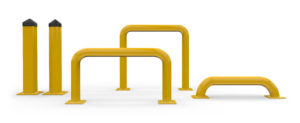Bobbi Philson
The authors of the Environment Rating Scales assess the safety of playgrounds using information from the U.S. Consumer Product Safety Commission. The information is condensed and easily understandable in the document Playground Information to Use with the Environment Rating Scales, available at www.ersi.info. Click on Quick Links for one of the ERS scales (ITERS-R, ECERS-R, ECERS-3, SACERS-U, and FCCERS-R), then click Supplementary Materials to find the document. It says, “A discrete barrier, such as structural bollards, trees, or posts, should be placed along any side of the playground which is within 30 feet of streets or parking lots, to prevent a vehicle from accidentally entering the space.”
As you see, the barrier does not have to be a structural bollard. It could be trees or posts. The barriers must be placed close enough together so that a vehicle is unable to ram the playground fence and enter the play space.
According to Wikipedia, a structural bollard is a sturdy, short, vertical post. Although it originally described a post on a ship or quay used principally for mooring boats, the word is now used to describe posts installed to control road traffic and posts designed to prevent car ramming attacks.
Installing these discrete barriers will increase the safety of your playground, as well as the peace of mind of parents and staff.
Here are some examples of bollards:




Thanks for sharing your info. I really appreciate your efforts and I am waiting for your next post thank you once again.
Amazing! Its really awesome post, I have got much clear idea concerning from this post.